Farm to Table: From the Farm to You
Learning Outcomes
After this lesson, students will be able to:
-
Define what Farm to Table means.
-
Understand how food reaches your table.
-
Identify examples of the journey of food from farm to plate.
-
Recognize the benefits of Farm to Table.
-
Explain the meaning of Farm to Table.
Farm to Table Meaning

The Farm to Table movement is an agricultural & culinary philosophy that values direct connections between food producers and consumers. It is a movement which promotes serving locally grown food directly from its origin to the consumers. It emphasizes fresh, local ingredients & supports sustainable food systems. It is a solution that helps to decrease carbon emissions and limit the reliance on preservatives. The Farm to Table movement has arisen with changes in attitudes about food safety, food freshness, food seasonality, & small-farm economics. The Farm to Table movement incorporates knowing where your food comes from.
What Does Farm to Table Mean?
Farm to Table means that the food on your plate comes directly from a farm, without going through a lot of steps in between. Think of it as a direct connection between the farmer & you! It's like getting your food straight from the source. Similar phrases include locally-sourced, farm fresh, and farm-to-fork. Farm to Table is a movement that promotes serving locally grown food directly from its origin to consumers.
The Farm to Table movement emphasizes using ingredients sourced locally, typically through direct purchase from the producer. This guarantees products that are fresher, more nutritious, & sustainable.
How Food Reaches Your Table
Usually, food goes through a few steps to get to your plate:
Farming
Farmers plant crops like vegetables, fruits, and grains, and raise animals like cows & chickens.
Transportation
The food is transported from the farms to factories, grocery stores, or restaurants.
Processing
Some foods are processed in factories to make them last longer or to create new products.
Grocery Stores/Restaurants
The food is then sold in grocery stores or used in restaurants.
Your Table
Finally, you buy the food & prepare it at home, or enjoy it at a restaurant.
The Farm to Table movement shortens this process. Instead of going through many steps, the food comes more directly from the farm to you.
Examples of Real Life: Journey of Food from Farm to Plate
Farmers Markets
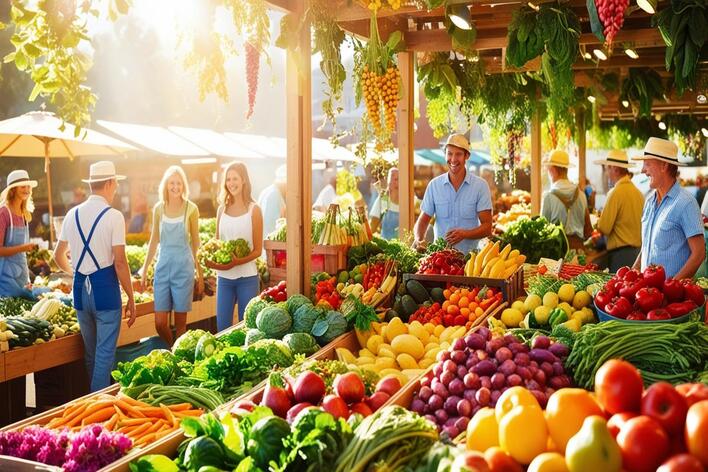
These are places where farmers sell their products directly to customers.
Community-Supported Agriculture (CSA)
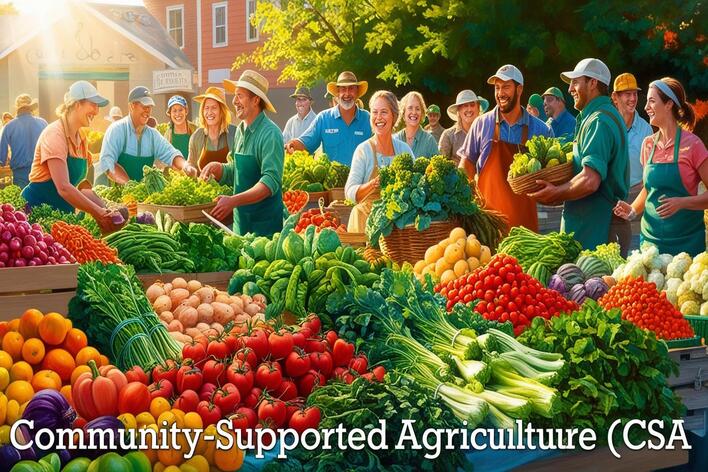
You can sign up to receive a regular box of fresh produce directly from a local farm.
Restaurants
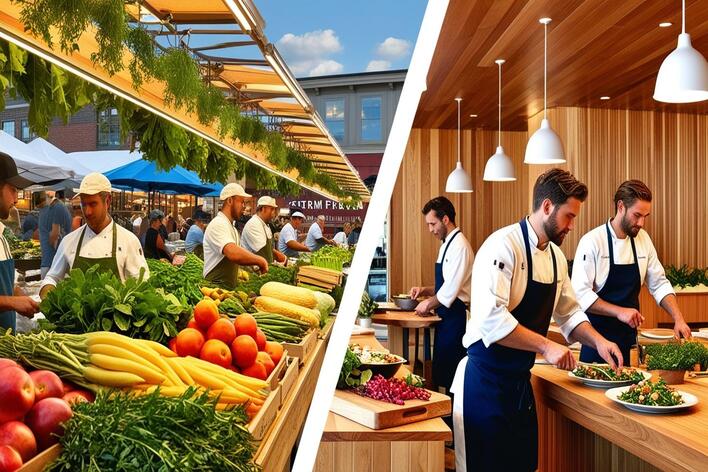
Some of the restaurants get their ingredients from local farms. They may even have their farms on a chalkboard.
Farm Visits
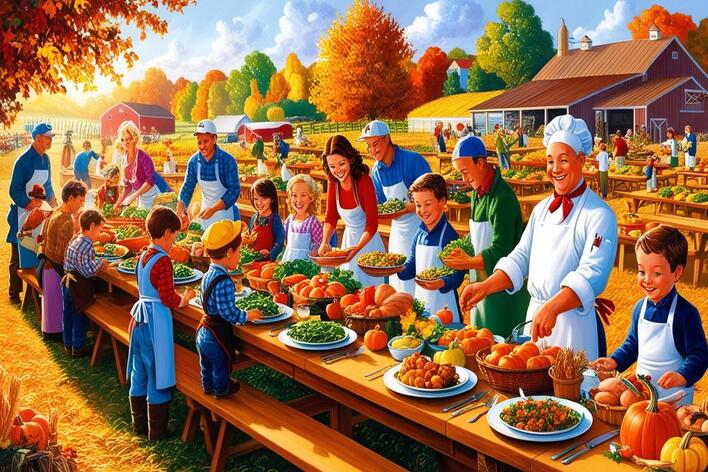
Some farms even have special days where they prepare & serve food on the premises. It allows you to see where your food actually comes from!
School Programs
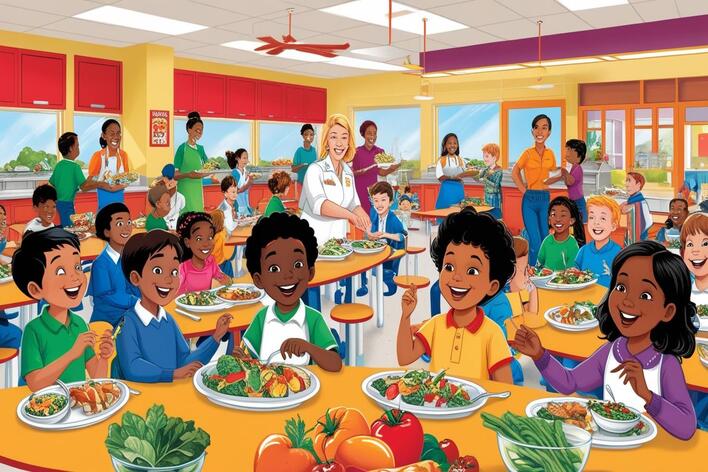
Farm to Table sometimes goes as far as schools, where cafeterias procure food from local producers directly.
Home Gardens
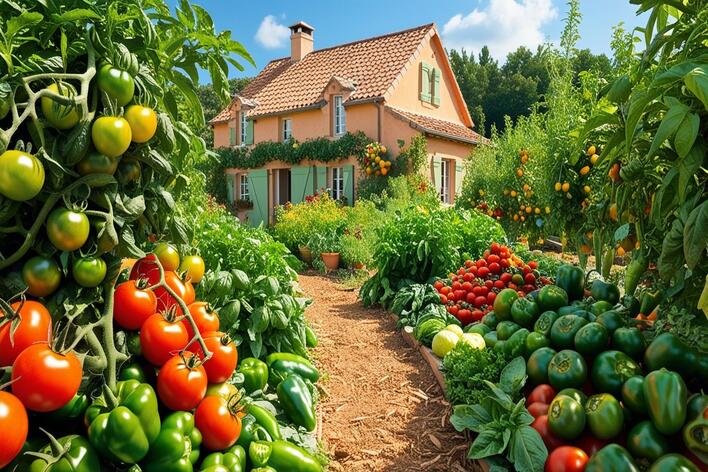
That is the true Farm to Table, growing your own fruits, veggies & herbs!
Benefits of Farm to Table
There is so much to love about Farm to Table:
Fresher Food
Food from nearby farms is usually fresher since it doesn’t travel as far.
Better Taste
It is a well-known fact that freshly picked fruits & vegetables are tastier.
Supports Local Farmers
Buying directly from farmers enables them to earn a better living.
Good for the Environment
It can lower carbon emissions by avoiding preservatives.
Knowing Where Your Food Comes From
You know precisely where your food comes from & how it was farmed.
How to Spot Real Farm to Table
Though the term “Farm to Table” currently has no official regulation, it is sometimes misused. Here’s how to tell if a place is Really Farm to Table:
-
Ask Questions: You should never be scared to ask where their food originates.
-
Look for Specifics: hey should name the particular farm(s) they source from.
-
Check the Menu: Look for the menu to emphasize local farms or seasonal ingredients.
Table comparing Traditional Food System vs. Farm to Table
|
Feature |
Traditional Food System |
Farm to Table |
|
Source of Food |
Confinement farms, often hundreds of miles away |
Local farms: Close to the consumer |
|
Transportation |
tens of thousands of miles, sometimes one-end of the pipeline to the other. |
They make short distances, straight from farm. |
|
Processing |
Often heavily processed |
Minimally processed, emphasizing fresh ingredients |
|
Freshness |
Not transported fresh & may be older. |
Fresher, harvested nearer to when eaten. |
|
Environmental Impact |
Transport leads to more carbon emissions |
Lower emissions because of a decrease in transportation |
|
Support for Local Farms |
Reducing support of local farmers |
Through direct support for our local farmers & community. |
Farm to Table: A Sustainable Solution
Farm to Table is also a sustainable solution for food insecurity. By prioritizing locally grown food, Farm to Table reduces reliance on long-distance transportation, which decreases carbon emissions and supports local economies. This system also helps preserve farmland & encourages responsible farming practices.
Fun Facts
-
The average meal travels about 1,500 miles to reach your plate.
-
72% of consumers prefer locally sourced food.
-
Buying fresh organic produce directly from local farmers means Farm to Table.
Conclusion
Farm to Table is a fantastic way to enjoy fresher, tastier food while supporting your local farmers & protecting the environment! By understanding what Farm to Table means, how it works, and its many benefits, you can make informed choices about the food you eat & contribute to a more sustainable future. So, next time you're at a restaurant or grocery store, look for Farm to Table options & enjoy the deliciousness of locally sourced food!. Choosing Farm to Table also helps to decrease carbon emissions
CBSE Schools In Popular Cities
- CBSE Schools in Bangalore
- CBSE Schools in Mumbai
- CBSE Schools in Pune
- CBSE Schools in Hyderabad
- CBSE Schools in Chennai
- CBSE Schools in Gurgaon
- CBSE Schools in Kolkata
- CBSE Schools in Indore
- CBSE Schools in Sonipat
- CBSE Schools in Delhi
- CBSE Schools in Rohtak
- CBSE Schools in Bhopal
- CBSE Schools in Aurangabad
- CBSE Schools in Jabalpur
- CBSE Schools in Jaipur
- CBSE Schools in Jodhpur
- CBSE Schools in Nagpur
- CBSE Schools in Ahmednagar
- CBSE School In Tumkur











